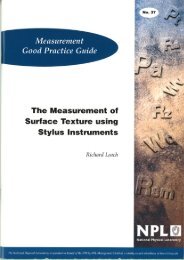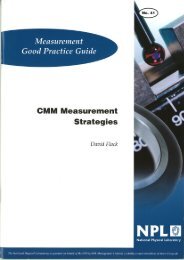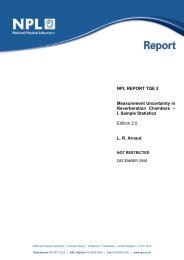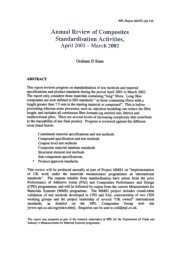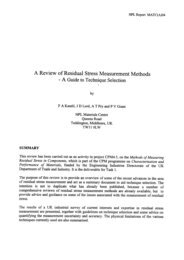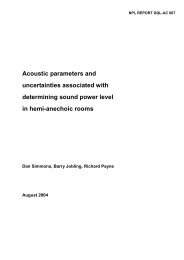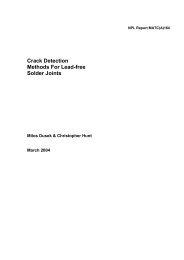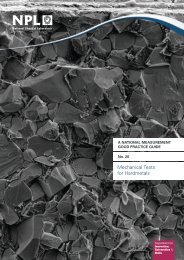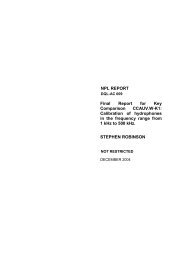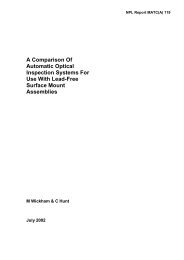Dimensional Measurement using Vision Systems - NPL Publications ...
Dimensional Measurement using Vision Systems - NPL Publications ...
Dimensional Measurement using Vision Systems - NPL Publications ...
You also want an ePaper? Increase the reach of your titles
YUMPU automatically turns print PDFs into web optimized ePapers that Google loves.
<strong>Measurement</strong> Good Practice Guide No. 39<br />
standard video convention. Line scan cameras are usually used with moving objects and<br />
hence, new frames are externally triggered and created line by line with a finite, predetermined<br />
length. Thus, there are no VSYNC signals within the video signal, so the frame<br />
grabber must be able to process the various external trigger inputs from the camera or<br />
control electronics.<br />
6.2 DIGITAL FRAME GRABBERS<br />
As the title implies, a digital frame grabber does not need to sample the analogue signal<br />
from a camera, as the input is already digitised. Consequently, the design of such frame<br />
grabbers is simpler. All digital cameras are progressive or line scan cameras, so each line is<br />
stored sequentially with the frame start and line start signals set on individual data lines.<br />
7 MAKING MEASUREMENTS<br />
Now that we have a properly illuminated object and the ability to image it, we are in a<br />
position to begin the process of making measurements <strong>using</strong> the image processing<br />
software. The first action to be taken is to calibrate the camera to convert the pixel spacing<br />
into units of length. Therefore, a traceable calibration standard or object with known<br />
dimensions is required. Before choosing this, it is important to remember that the ideal<br />
calibration standard for any application is one with similar dimensions, appearance and<br />
texture to the artefacts to be measured.<br />
Sections 7.1-5 describe the processes used to calibrate a Leitz Ergolux AMC microscope,<br />
fitted with a 1024x1024 Pulnix digital camera and a Leica QM550 CW image analyser.<br />
Whilst there may be some variations in manufacturer terminology and facilities, the<br />
calibration and measurement processes described in these sections are essentially<br />
applicable to all microscopy and macroscopy applications <strong>using</strong> vision systems.<br />
7.1 CHOOSING THE RIGHT TYPE OF MEASUREMENTS<br />
Before making any measurements, it is first worth considering some of the different types<br />
of dimensional measurements that can be made. When <strong>using</strong> a binary image (see section<br />
7.4) it is likely that most measurements will be point to point. For example, the diameter of<br />
a circular spot may be given by the longest line of detected pixels in the object. This is<br />
known as a feret diameter and is akin to a calliper measurement. These types of<br />
measurement are easily obtainable from the vision system, and for most applications have<br />
an acceptable accuracy of ±2 pixels. If higher accuracy is required, then the diameter of the<br />
spot may be derived from area measurements. Sub-pixel accuracy is readily achievable by<br />
47



